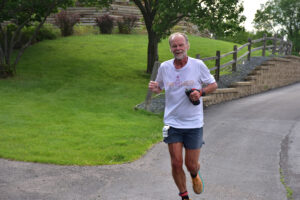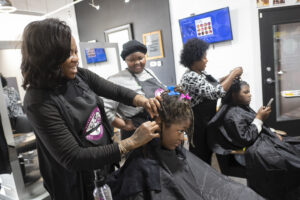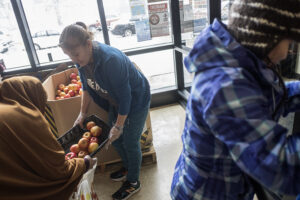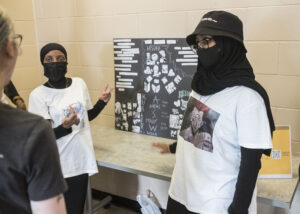Taking care of your health doesn’t necessarily equate to making routine stops at the doctor’s office. Being healthy and feeling well, safe, and secure requires looking at a bigger picture—focusing on how our everyday lives, work, environment, and choices influence our well-being.
For East African women in the Cedar Riverside neighborhood, one way of fostering health and healing has been through a form of dance and poetry native to Somalia: buraanbur. From January through June of this year, about 20 women regularly attended buraanbur dance classes at the Brian Coyle Center hosted by the Immigrant Women’s Advocacy Program (IWAP). This opportunity was made possible through a special partnership with The Cedar Cultural Center and The City of Minneapolis Health Department, and was sponsored by the National Endowment for the Arts. The classes served multiple purposes. Not only were they a way for women to improve their physical health by exercising, but they were also an opportunity to break isolation and build relationships—all while being rooted in their culture.
“We come together here twice a week. We socialize; we dance; we sweat; and we laugh. If someone doesn’t come to the session, we ask each other, ‘Where is so and so?’ and check up on them. We care for each other and have become more than just neighbors. We dance together whilst feeling connected to my culture like it was back in my home country,” one participant said.
Miski Abdulle, our Director of Immigrant Services, touched on how they were not just dance sessions, but also ‘healing sessions’ for some participants who are survivors of domestic abuse and sexual violence, the population that IWAP primarily works with. This type of cultural healing “heals the soul,” she said. Participants spoke to her about feeling lighter and sleeping and eating better than before. Some said:
“I get to exercise, be active. And this is good for my mental health too because I feel happy here. It’s a place for women to be together. This is just like family to me.”
“I have become good friends with the women here and I feel a sense of community support and togetherness.”
“I have been coming to these buraanbur sessions because it is a fun place to be. I get to see the same faces, people who are my neighbors. I get to laugh with them, exercise, and enjoy my culture.”
A sense of belonging and community. Cultural connectedness and healing. Artistic expression. These are all pieces in our vision for thriving communities. Because we don’t just want our communities to be healthy; we want them to be well. And that requires looking at the bigger picture.




